|
A lot of people think more is better. The more information you have, the more documentation you have. The more plans you have, all make life so much easier, better and safer.
However, the reality is quite different. Ironically, the more information someone has, the harder it is to make an informed decision. I’ve seen risk management documents which run to 70 pages in length, which nobody is going to read for one, but also, even if you did read it all, there’s way too much information contained within those 70 pages for anyone to make a logical and informed decision. More is most definitely not better. As humans, our brains can only take in so much info and analyse it before it gets overwhelmed. Too many possibilities become too hard to rationalise and think about logically and the more information and possibilities, the harder it is to respond and make any sort of informed decision. This is why we see people in high stress situations make very poor decisions, which result in bad outcomes. It’s not the lack of information at hand. It’s too much. Instead of having reams of paperwork, which is supposedly there to help people run programs safely, you’re far better off to only look at key points of data to help you make a far more informed decision than the alternative. Whilst this may seem counter-intuitive, the fact is that we’re not good at decision making as the stress level increases and the amount of information to analyse increases. We become myopic and our field of vision and understanding narrows. That’s why, sadly, so many coronial inquests on the surface seem so simple and straight forward. Why wasn’t this simple decision made at this point in time to prevent the fatality from happening? Chances are that there was too much information at hand. We therefore need to simplify what we’re doing and how we’re doing it to improve our decision-making abilities. Nobody is going to read or even be able to use huge documents. They’re only really useful to lawyers post incident to spend more time than is reasonable for them to photocopy and read through so they can bill clients for it. Whilst that’s wonderfully profitable for lawyers, it’s actually not much help to you in the field. How do you filter out the noise and get to the key information you need? That’s challenging, because each activity is situational. However, if you focus on your key risks and supervision responsibilities, then you’re well on the way to making good decisions. What’s the weather like? What’s the group dynamics like? What are the key activity risks? This is a great start. Also delegating responsibilities and positive team communications and dynamics, is a great way to reduce the burden of decision making on any one person to enable fast and effective reviews and analysis of the information at hand. You often come across people who carry risk management documents on them as their way of effective risk management or responding if something doesn’t go to plan. However, this is problematic in that the time it takes to find something within that document that may be useful in a critical incident, is just time wasted in actually dealing with the issue at hand. Whilst this doesn’t mean that this preparation is time wasted on developing good risk management systems, processes and documenting this, it does mean that you need competent people on the frontline running programs who can make informed decisions based on a reasonably small set of data. This takes training and practice, but if you realise that to begin with, the more information at hand, the more difficult it is to make informed decisions, then you’re well on the way to being able to more effectively handle stressful situations and incidents and come out of them with a positive outcome having managed and mitigated the situation at hand. Therefore, don’t let yourself go down with myopic tunnel vision. Work out what’s important and filter out all the noise. Run some training scenarios and make sure you’re ready for whatever comes your way.
0 Comments
Welcome to the Xcursion Risk Tips. These tips are designed to save you time, money, reduce risk, and improve safety for all of your programs. Today, we're going to look at students cooking. Phew, yes you probably just reel back from some certain experience that you've had out on a program where our kids cooked you something. Now, I've had both ends of this spectrum. Some kids well, you really wouldn't trust what they cook or what they put in that meal. However, other kids can cook so well. It is great to see them get involved and actually cook something.
I've come across schools and I've come across teachers who are really hesitant to allow kids to cook. But seriously, at what point do you let go and enable kids to take ownership and take responsibility and do something they really want to try? This is something that not a lot of kids get to do at home. So the opportunity to cook whilst on camp is really important and they love to try and impress you with their meals. There are a couple of risks involved in this and a couple of hazards. The two main ones that we want to look at are knives and fires. Firstly, it's the preparation of the meal. It's cutting up everything on the cutting boards and making sure that they don't cut the veggies and themselves with the blunt knives. Now more often than not, you're going to find blunt knives on camps because you can't trust anybody with a sharp knife. Unfortunately, with a blunt knife, they're more risk of causing injuries, than sharp knives. Because the pressure that's applied to a blunt knife is far greater than the pressure you need to apply with a sharp knife. So at least have your knives slightly sharpened so that they're not totally blunt and can cause really really bad injuries. One student I had on one of my programs, he managed to stab himself in the webbing of his hand with a knife. How we managed to do that? I don't know. But he was cutting up the vegetables and just came up to me and said, "Oh Sir, Sir I've cut myself." I was like, "How, how did you do that?" I mean, it was an impressive cut and we managed to apply pressure and patch it up ok. But I was astounded. But basically what he had done was he had pushed so much pressure on the knife, flicked it off the vegetable and skew it himself in the hand. Now that's one part of it. You really do need to monitor and supervise effectively when the kids are cutting things up. Once they're all cut up, the next thing is the fire. Or most likely you're going to get something a Trangia. Now a Trangia for those who don't know, is this little stove and it's got an alcohol burner in the middle, and you pop it in and put your pot on and away it goes. Many schools I've worked at, many programs I've seen to begin with, didn't actually contain these fires or didn't monitor this effectively. This is the next really critical hazard that you need to manage effectively for when students are cooking. So what you want to do is set up what we call it a Trangia circle. Now a Trangia circle can be done just with a small bit of rope and you put a big circle right around and the pots go in there, nobody or nothing else goes in there and your fuels go well away from where you are. So with that in mind that you have your contained cooking circle, and you only limit the number of kids near the cooking circle. You don't need three kids cooking in one pot. You need one student cooking in one pot. So, limit the numbers around the cooking circle and actively monitor this. Don't cook your own dinner at this point in time. One great solution is get one of the kids to cook. This has worked many many times that I've often had a lot of student meals because they've offered to cook for me. At this point in time, you don't want to be cooking because you need to be supervising what's going on and monitoring that fire circle and monitoring the way in which it's being conducted. This is critically important to reduce the risk of burns and scalds, which are some of the highest numbers of injuries that you get when you have kids cooking on programs. So you monitor that. They cook you dinner and you get to stand around drinking a cup of coffee whilst you watch them cook your dinner. What's not to like about that? One of the problems I've seen is when staff are cooking their own dinners is that they don't have that level of supervision. They become too focused on their own meal and at the end of the day, you're the leader, you're looking after these kids, you can eat later. So, use that opportunity to try some kids cooking and that the reaction that you get when they cook something for you and you are able to share a meal with them is really good and it's all part of that bonding experience. It's all part of that journey of a camp. That way you can develop rapport with your kids in such a unique setting. So two main risks for cooking with kids, it's not the taste, it's not the flavor, it's not what they cook although sometimes they can burn things and it's horrible, but we won't go there. But the two main hazards are cutting with knives, prepping meals, and also the cooking circle or the Trangia circle. If you can effectively supervise these two, then you've seriously reduced the risk of something going wrong on your program, and the kids are learning from this experience by cooking meals for themselves. At Xcursion, we are often asked questions about data security and sovereignty. Not the most exciting question, but an important one all the same. With student medical records, security is a must. However, what do most schools currently do? They tend to either use paper printouts, which are really hard to track and I’ve seen folders of these go missing a number of times. No security, no track, no idea where that highly confidential information ended up. Others use email and things such as dropbox or google drive to share medical information for camps. Whilst this is a slight step up from leaving a folder around, it is in fact still not a suitable way of data management. Once you share something on google drive or dropbox, there’s every chance that the information on that drive isn’t located in your country of origin, which is important when it comes to student medical records, which in most counties need to be stored only in that country of origin. You then still have the same problem once you’re heading out for school sport, school excursions or activities. How are you going to safely carry and use the information you need? Most of the time we’re back to using print outs, which can contain students home addresses, medical issues and a range of other private healthcare and personal information which needs to be protected. This was a problem we faced years ago before we developed the Xcursion mobile app. Data security was literally non-existent for our school programs and we needed a way to easily, securely and effectively access that information and use it when it’s needed. The rest of the time, we wanted it locked away and secure from transfer or loss. Therefore, we encrypted our entire Xcursion mobile app platform and databases to ensure that all of our client data was secure and hosted in their country of origin. This way we were able to provide much better data security than before and ensure the most important information was both secure and accessible anytime a teacher needed it for any sort of medication administration, incident report or just a quick call to parents to let them know everything was ok.
How are you securing your information? As experienced teachers, we know how hard it is to keep up with so many responsibilities in and out of school, so if you’d like us to help you make medical information more secure and easier to manage for all your school excursions, school sports and activities, then get in touch today. Recently, I was reading a fascinating book about airplane crashes and how poor decision making ultimately led to disaster and the huge loss of life. What was striking about this was the similarity to so many coronial inquests for outdoor education incidents.
Much like many fatalities on outdoor expeditions, each of the airplane disasters could have been avoided. However, fatigue and poor decision making ultimately led to disaster. So why are we so impaired by fatigue and why do some organisations still not see this as a major problem? One school, which shall remain unnamed, for which I worked a number of years ago, were vehemently opposed to any discussion around fatigue, despite numerous concerns being raised by staff around the impact it was having on the welfare and well-being of the staff. The implication was that we were just being lazy and trying to get out of work. I would suggest 80+ hour weeks backed up by driving vehicles full of students was a bit over the top. However, I’m not going to dwell on the rest of that experience, other than to say it was a pre-loaded disaster waiting to happen. When we’re fatigued, a number of things happen which reduce our ability to make clear, informed and reasonable decisions. The harder we try, the less effective this becomes. Our focus narrows further and further into a tunnel vision that cripples our ability to make sound, reasoned judgment. This was evident in the cockpit recordings of each of the plane crashes outlined in the book. Instead of clear, thoughtful and decisive action, mistake, after mistake, after mistake was made, culminating in the inevitable plane crash. Experienced pilots forgot their training. Simple corrective actions weren’t taken. The same is true of fatalities in outdoor education in which fatigue adversely impacts on the ability of an instructor to make reasonable, informed decisions. Research has shown that multiple shifts of work and not sleeping for 24 hours (which counts poor/broken sleep within the mix), has the same effect on decision making that being drunk has. Do we ever allow teachers and instructors to be drunk at work? No! So why do we allow fatigue to be overlooked? If you examine the black box flight recordings of the conversations inside the cockpit, it becomes abundantly clear that for example, despite evidence to suggest that all the pilots needed to do to save the plane and those they were responsible for was to push down on the controls to increase speed and prevent a stall, they kept pulling back on the stick, consequently condemning the plane and all onboard. However, before we call them stupid, which is the temptation of a back-seat pilot with no airtime, let’s look at the effects which fatigue has on people and why it’s not surprising that such poor decisions were made in the air and also in the field, for so many expeditions which have gone disastrously wrong. When people are fatigued and/or drunk, their reaction time slows, their ability to solve complex problems is significantly inhibited and their ability to perform even the most regular and simple tasks becomes compromised. The only solution for fatigue, is sleep, not push through it as a former boss of mine would always profess was the way he always did it and we should do the same! That, in my opinion, is idiotic in the extreme and will eventually result in someone getting killed. However, you can always learn a lot from idiots as they demonstrate the dangers of what not to do. Often this can be even more beneficial than someone telling you what you should do. Good decision making is one of the best risk management strategies you can have. You see something that hasn’t gone to plan, doesn’t fit or doesn’t feel right. You assess the problem, adapt and respond accordingly. Good outdoor leaders will continually do this throughout any program. Most of the time, what they do isn’t even noticeable. Other times, it’s clear that there’s a problem and there’s a shift in plans to address it. The same is true with airlines. Most of the time you have no idea that corrective action was taken, which is the way it should be. Unfortunately, when we’re fatigued, that vitally important, broad problem-solving skill set stops working. We can only focus on single tasks and, even then, we might only be able to focus on a single part of a single task, which is even worse. Often fatigued individuals will also focus on something that is completely irrelevant to the problem at hand. Instead, they become entrenched in a minor detail and they can obsess over it, as it’s the key to solving their current problem. However, their tired-self can’t even rationalise the fact that they’re grabbing onto something which is completely pointless, again due to their diminished capacity to make rational decisions. Unfortunately, in outdoor ed incidents, we generally don’t have first hand recordings of the events as they transpire, which we do have for the airline industry. Listening to these recordings, it becomes clear that minor and irrelevant concerns become the sole focus of someone who is fatigued. The death spiral starts and there’s no way out. If you compare this with coronial inquests into outdoor education fatalities, on many occasions, you can see how fatigue might have impaired judgment and might have contributed to triggering the repeatedly poor decisions and the downward spiral which ultimately resulted in the fatality. Now not all outdoor ed fatalities have fatigue as a contributing factor, but if we’re aware of the fact that it’s one of the most dangerous problems we can face even as experienced instructors, then we can put systems in place to manage and avoid fatigue and it’s related hazards. If we don’t want staff to be working ‘drunk’ from fatigue, then we must have good systems in place for managing this. How long is an acceptable shift? What are the tasks that each staff member is doing during this time? What driving is involved? Can the load be shared? What if someone feels fatigued? What backup plans do you have in place? The outcome of each of the airplane crashes was that systems to monitor and address fatigue were introduced, the result being, safer air travel. For outdoor education, this is something that must be addressed. It can’t be pushed through. It can’t be ignored. It can’t be put off for a discussion later in time. The end results, like the fatal vehicle accident in New Zealand where the teacher fell asleep at the wheel, are self-evident that fatigue and good decision making don’t go hand in hand. Do you have a fatigue management system in place? If not, make it your number 1 priority today as it’s vital that we and our industry ensure we keep safe those for whom we’re responsible. It’s essential to have instructors with clear heads and great decision-making skills, so that every outdoor experience is a wonderful and rewarding one for everyone. When looking at any activity or required skill within an organisation, there are four levels of competency. As we learn and develop, no matter what the skill or activity is, we all go through these stages from knowing nothing about what we’re doing to being unconsciously competent in what we do.
As we move through each of these stages, it can be quite confronting for many people, especially if they’ve been doing something which isn’t quite right or there’s more to what they’re doing than they’ve ever imagined. The first stage and often the most confronting realisation for people is unconscious incompetence. This is where you don’t know what you don’t know. It’s the most frustrating point at which we find ourselves and in terms of risk management, the most dangerous point and position someone can be in if they’re responsible for an outdoor or experiential program which involves a level of risk. The worrying thing about this is that over many years, I’ve come across countless people in the head of outdoor education or experiential education positions who are unconsciously incompetent. They’ve been promoted as a teacher into a role for which they might have had an interest, but no real or extensive experience. In this case, whoever is put into this role is being failed by the organisation. Having an interest in something versus understanding the role and inherent risks is a totally different thing. If you don’t know the risks of an activity or program, how can you be expected to manage them effectively? Getting some basic training in the skill or activity then helps someone to move from this first stage to the second one, which is conscious incompetence. This is where you realise you lack certain skills and understand the need to train in, practise and develop those skills. In terms of risk management, this is key to getting things right within your school or organisation. For many of those teachers who have been promoted to positions of responsibility to oversee programs with a range of risks involved, it’s vital that each understands the risks to which they and their staff are exposed and how to effectively manage these risks. Once someone has this realisation, then they can start to plan to address this skills’ gap in themselves and in their organisation. Further training and experience at this point, then gets you to a position where you’re consciously competent. You still have to work on many parts of the programs and continue to practise and develop your skills, but overall, you’re good at what you do and are able to support and develop others as well. The final stage is unconscious competence. You know what you’re doing without thinking about it. You have a level of experience and initiation, which guides your decision-making process to support the programs you’re running. In your mind, you have a picture of what a standard program, day or experience should look and feel like and you automatically react and respond if something doesn’t quite fit. For example, if a series of different weather conditions or warnings present themselves, you unconsciously play out various scenarios in your mind as to the potential impact and consequences of this. A realisation of this for me was on one program. There was a pattern of illness and student behaviours emerging which pointed toward a series of potential injuries. The change of energy in the group, the apparent fatigue that was emerging, meant that a change of plans was needed. Due to the different level of skills and experience amongst the staff team, only a couple of staff could see this pattern emerging and others couldn’t see the problem at hand. The potential negative consequences of not being able to identify risks as they’re emerging can be huge. It’s critical to ensure that you have unconsciously competent staff in your team to help advise you and others on hazards and risks which might not be obvious to others who are still at the lower levels of skills’ development. Whilst some of these four different levels can be addressed through training, which is vitally important to begin with, the other levels are grown and developed through practice and experience in whatever it is you’re doing. Further training can reinforce this. However, practice really does make perfect. Whatever level you and your colleagues are at now, you will benefit immensely from training and experience to ensure that all your staff are unconsciously competent in whatever it is they’re doing. A while ago I wrote about finding myself outside my comfort zone on a reccie trip with some colleagues. We were white water canoeing, something I’d never done before. It was something I found quite challenging, but a rewarding learning experience.
Learning new skills in outdoor education is a great way to keep things interesting and expand your skill set. However, what happens with something you’re very experienced in? Should you be practising it outside of work? Is what you do on the job enough practice for something at which you’re good? Snow skiing is something I’ve done since I was 5 years old and an industry I’ve worked in for around 7 years. In terms of outdoor skills, I can safely say, snow skiing is my strongest one. However, despite this experience, I still have plenty to learn and so much more upon which to improve. However, it’s not until your skills are actually put to the test, that you realise just how much more there is to learn and why it’s so important to continually up-skill. Recently I spent a couple of weeks overseas skiing, as it’s been a number of years since I’ve done an entire season of work at the snow. When doing seasons, you have the time to truly build your skill-set and challenge yourself in so many different ways. However, it’s surprising how quickly you lose some of your finer skills when the season’s over. Getting back on skis for the first time in a year is always an interesting experience. I love the sound of the boot clicking into the binding, fixing my helmet and lowering my goggles ready to jump on the lift. However, despite having skied many double black diamond runs over the years, I’m not going to head for the highest peak and fang it down the most hectic run as fast as I can, launching off everything I can find. No, that would be idiotic. Instead, I like to find a nice green or blue trail to run up and down to warm up and get a feel for everything again. I’ll probably spend an entire day doing this. When I’ve had a chance to get my balance back and regain the feel for my skis, I’m ready to start rebuilding my deteriorated skill set that time has eroded. With any outdoor skill, you’ll reach a point where you’re highly competent and things will come back to you quickly. However, without practice, similar to physical fitness, all these hard skills, deteriorate over time. For an instructor, this deterioration is not good and can come from both lack of practice, or only operating at a much lower level of intensity. If for example I was with a group skiing day in and day out, as is often the case for experienced instructors of any outdoor activity, I might just be cruising all the time on green or blue runs to match the level of ability of the group. However, cruising can lead to complacency and dull your senses to the wider challenges and risks of the activity that you’re leading. To avoid complacency, often called an expert blind spot, you must therefore continually practise and test your own skills at a much higher level to ensure you’re prepared for any contingency. You never know when you’ll need to quickly switch up from cruising instructor to rapid situational risk assessor and responder. For me, this realisation came when I took a ‘short-cut’ on Whistler Mountain. I wanted to get to the furthest section of the mountain and I could see the lift to where I wanted to reach. I’d been skiing along the top of a ridge line, on a blue home trail. However, I saw what appeared to be a nice descent into the next valley and onto the lift. It was soft and powdery to begin with, but suddenly, on my right appeared a cliff and in front of me was a massively steep chute littered with rocks. Most skiers have a home mountain, which they know like the back of their hand. For me this is Thredbo and so I can criss-cross it all day knowing where my random short cuts will take me. However, again this home mountain confidence can lead to complacency and over-confidence in other situations. Practising your skills on different mountains however, and getting into situations such as I did, is a real reminder of how aware and vigilant you need to be in the outdoors. Rather than panicking, as I stared down the incredibly steep descent, I quickly dug in and attacked the chute, swiftly switching back and forth one sharp turn after another to control my descent, whilst avoiding the jagged rocks protruding from the snow. With a few crunching sounds from under my skis, I cleared the worst of it and glided out the bottom into a wide open section of deep soft snow. Glancing back up, I could now see the insanity of the ‘short cut’ in all its glory. Let’s do that again! I thought… Whilst this wasn’t an ideal situation in which to find myself, the ability to switch up to a higher level of thinking and respond swiftly is an important thing to be able to do with any of your outdoor skills. This requires practice and pushing your own limits outside of your regular work. Whilst you’d never take a group with you into a situation like this, this sort of experience reminds you of the risks that are inherent with an activity such as skiing, as well as the need to continuously build and improve upon your own skills. Expertise does lead to complacency and as outdoor educators and instructors we need to practise our own skills and be reminded that there are always limits to our experience and expertise. This helps us to be aware that there are always going to be risks involved and that we must eliminate, manage or mitigate those risks for our programs. However, if we don’t practise and test our hard skills outside of work, the chances are, your comfortable daily operations will become increasingly exposed to potential complacency as the instructor skill-sets deteriorate and activity risks don’t appear as dangerous as they really are. To help resolve my over confidence and need to rebuild my alpine skill set, it was time for me to go back to ski school and take some lessons again. Lately, I’ve been doing a lot of professional development. Most people will groan when they hear PD, as they’ve experienced the classic ‘first day(s) back’ professional development time, which could be just a complete waste of time and energy for all involved. From what I’ve experienced over the years, you may as well have another day of holidays and it would be far more beneficial. Whilst much of this is done to save money and meet the mandatory PD hours requirements for teachers, are teachers actually learning anything that will improve their teaching practice or professionalism, or is it just an exercise in futility?
Don’t get me wrong! PD is vitally important, but is self-initiated and directed learning a far better approach? What I’ve been doing recently for my own PD has been through two different forms. The first has been reconnoitering new areas of the countryside to further develop a program. This is always an exciting and challenging time as now you’re exploring new areas with which you’re unfamiliar and trying to find suitable tracks, trails, rivers and campsites which are suitable for the age and experience level of the group for which you’re planning. Sometimes, it’s easy and quickly falls into place. Other times, it’s like trying to get out of a darkened pit full of goblins whilst being stalked by a ring-obsessed weirdo. On this occasion, it was closer to the latter, as we found out the new area was not a nice babbling brook surrounded by gentle countryside, but rather a vicious, shallow, rapid-flowing white water filled gorge. We were about 2km in when we realised how nasty it was getting and what was supposed to be a pleasant three hour paddle, took seven hours! Thankfully, we didn’t have to battle orcs along the way, but at some points I was hoping that eagles would come and rescue us. Sadly, it was not to be and we had to navigate and negotiate the gruelling gorge that went on for several kilometres. During this time, we’d also looked at mountain biking, canoeing and hiking as options in and around Canberra as there are some amazing national park areas with great tracks and trails throughout. Despite the fact that a number of these options weren’t particularly suitable to take students on, this was an extremely successful trip. From a professional planning point of view, even if you’re not going to change your program in any measurable way, going on “reccies” is a useful exercise, as you’re reinforcing your own skill set for navigation, route assessment, logistics planning and risk management. It’s all these concerns that you suddenly find come back to the front of your mind when looking at new areas that can naturally feed-back into your existing program and help you re-think, re-assess and improve upon what you’re already doing. The other PD I’ve been doing has been the more traditional kind, in terms of workshops and conferences. Sometimes these are hit and miss when it comes to helping you in your teaching role, but that mainly comes down to what sort of conference you’re going to and which sessions you attend. The first one I went to was a digital schools’ conference. It was basically exploring how technology can be better used in education. I sat in on a couple of sessions which were excellent as the presenters hit the nail on the head! It’s not really about the technology. It’s about the use of technology as part of a wider educational experience. When you boil it all down, the skills you’re learning in STEM and trying to innovate with are exactly the same as what’s being learnt through outdoor education. The core principles of innovation are: • Problem solving, risk taking, adaptability, teamwork and leadership. The core principles of outdoor ed are: • Problem solving, risk taking, adaptability, teamwork and leadership. Simple right? Well sadly, it’s not always the case and often teachers can see the use of technology or coding as the end goal or the learning outcome. As in outdoor ed, often schools see the outcome as getting kids outdoor or learning how to ride a bike or canoe. These are all just the means through which these core cognitive and experiential skills are being developed. I also had the wonderful opportunity to present on innovation and how the chaotic and imprecise science it is to develop an idea into something that solves a much wider real world problem. I also explored how this can be translated into the context of education and why this is now such an important part of the modernisation of education that might one day see us escape from the industrial revolution hangover upon which our curriculum’s based. The second conference I went to was more closely related to outdoor education and covered some fascinating insights into concussion identification and management. This was a great up-skilling opportunity for me, as whilst I’d understood and had managed a number of concussions over the years, I was able to get a far greater understanding of what happens with the injury and how it manifests itself. This is something that a senior first aid course would never cover and even with the wilderness courses I’ve done, it was only ever touched on briefly. Yet attending a comprehensive keynote presentation by a leading medical specialist in the field, was an amazing learning opportunity. PD can be both insanely frustrating if it’s done poorly, or immensely beneficial if it’s done well. Some people might perceive PD at conferences as junkets, but this couldn’t be further from the truth. From the Wilderness Risk Management Conference I attended last year to the various ones I’ve been to this year, it’s helped me attain a much greater understanding of my own professional practice and helped me to reflect and review what I do as an outdoor educator and how I go about doing it. I have to admit I have great memories of the enforced PD days from school days past. At one school I was once part of an English/History faculty. We taught an integrated unit called Valley In Perspective, that combined English/History/Geography and Outdoor Education. It was in some ways a little heavy on the academics for my likings, but overall it worked quite well. We were always allocated a day at the start of term for ‘meetings,’ which was code for sitting in the office and wasting lots of time, something which I can’t stand doing. However, one of the teachers had a boat and so instead of sitting in the office, we went and spent the day on his boat. We would discuss work for about an hour, but then would relax for the rest of the day lazing about the deck or going sailing and usually having fish and chips for lunch. Whilst many a useless manager would say this was a waste of time, it was an excellent team building exercise and our team of four worked exceptionally well together, despite the school being a disastrous toxic mess in which to work. Ultimately, PD is vitally important for renewing and up-skilling you in your professional life and can have great benefits when done well. Meetings can be of some value, so long as you limit their time and have clear goals and objectives from the outset. However, to get any real-residual benefit from professional development, you need to go out, test your existing skills and continually learn new ones which can help you to become a far more effective educator throughout your life. Risk management in schools is an interesting and concerning problem. There’s nothing in teachers’ training which helps them to understand the role and responsibilities of running activities outside the school grounds. In years gone by, this wasn’t too much of a worry as most teachers weren’t involved with the sheer volume of additional programs, excursions, activities and overseas trips which now form part of a normal year at school.
The only education that teachers seem to have in this is that at some point, they’re involved in a trip somewhere doing something and rather than having any actual training to be able to manage and help run whatever it is in which they’ve now found themselves involved, they’re entirely reliant on learning something about what they should be doing through osmosis. The expectation that they absorb something at some point in time which then magically enables them to manage risk in a well planned and professional way is ridiculous in the extreme, yet that’s basically the industry standard. Sadly, osmosis is a rather unreliable means through which people gain even a decent baseline level of any sort of skill, let alone risk management. It’s like letting your English teachers learn about a text for the first time as they read it with (or slightly behind) the class, or your maths teacher, teach themselves by reading a chapter ahead and asking the other teachers a few questions about ‘this whole algebra thing.’ Parents would be horrified and continually write angry emails to the school if they knew their children were being taught by teachers who literally knew nothing about their subject areas. Why is nobody upset when that same lack of skill and understanding is being applied to situations which place students at real risk or harm? Why is risk management training such an afterthought? Why do schools rely on osmosis for one of the most critical things required to keep their students safe? Is it because they don’t care? Most likely not. Is it because it’s too expensive? Hardly, as most training days are less than $500 a day and the cost to investigate even a minor issue is viciously expensive and can easily run into the thousands of dollars. Could it be something that they think they can contract out and not worry about because it’s now someone else’s problem. Perhaps they think they can do this, yet ultimately, they simply can’t contract this out and absolve themselves of any responsibility. If only there were an easy answer to this. There is some level of naivety in all of this and what’s commonly known as unconscious incompetence. You don’t know what you don’t know. So if you don’t know it, then how can you be expected to do something about it? Unfortunately, this is not considered a reasonable or acceptable defence when something goes wrong. It just makes you look more idiotic than before and even a mediocre barrister will maul the hell out of a teacher who tries to use this. The ‘I didn’t know’ defence has sadly been used in coronial inquests and no amount of ignorance has ever brought a deceased child back nor mended any shattered lives. So if training isn’t too expensive and it’s not too hard to do, why is it overlooked? I’ve often had the reply from teachers ‘I’m just a classroom teacher, so I don’t need to do anything like that.’ Yet these same classroom teachers are taking students down town, interstate and overseas on study tours, sports trips and cultural immersion programs. Just because you’re not going white water canoeing in South America, doesn’t mean you, your students and the school are not exposed to a huge range of potential risks from cultural misunderstandings, to political and social risks and poor student behaviour, just to name a few. Every time teachers leave the school gates with a group, they’re responsible for the safety and well-being of that group and like the English teacher reading the text as they go, teachers regardless of subject expertise, should not be out on a trip, anywhere, doing anything and making it up as they go. In my twenty odd years in education (some more odd than others), the overwhelming trend has however been to allow totally inexperienced and untrained teachers to take groups out and make stuff up as they go. This is wrong and at the end of the day, luck always runs out and situations like this will always end badly. Rather than rely on the magical fairy tale land of risk management through osmosis and relying on making stuff to as you go, it’s time to up the ante on teacher training and enable those keen and enthusiastic teachers who want to improve student learning through amazing real world experiences, to undertake some real risk management training and properly build their skill-set around good risk management practices so that every trip on which they go, is a memorable one for their students for all the right reasons. When we don’t know what we’re doing and we’re expected to have answers or manage risk, this is a massive problem. How can we be expected to put systems in place and plan for contingencies if we don’t understand the situation or context of what we’re expected to be doing.
Many teachers find themselves in this exact situation and are expected to plan for something about which they know nothing. At this point, the major activity and operational risk comes from the person not knowing what they’re doing, rather than the potential inherent risks of the activity itself. Do we let inexperienced drivers get behind the wheel without any training or supervision? Thankfully not. Yet why are so many teachers allowed to run sports, excursions and activities with no idea, training nor experience in what they’re doing? It literally makes no sense at all to allow someone to take on a role which requires them to plan for and mitigate risks, if they have no idea themselves. The increased risk here comes from the person not knowing what they’re doing at all and they’re simply making things up as they go, which is never good in terms of risk management. A number of years ago we came across one such group on an expedition. We were in Kangaroo Valley and just starting out on an expedition when we came across a group just finishing an expedition. In talking with them, we quickly realised they had absolutely no idea what they were doing. Their whole risk management plan was apparently based upon the fact that one of the teachers went for a walk and saw a snake, therefore they went canoeing instead because the risk of the snake was too great. I really want to laugh at this point as on that exact same river, I saw a 3 metre Eastern Brown Snake in the water and then it slithered up onto the place we had just had lunch, so seeing a snake in the wild and basing your decision on risk management around a single sighting of a snake seems quite idiotic to be perfectly honest. Essentially these guys had been out on a multi day canoe expedition with no canoe instructors, no maps, no communications devices and no backup plans. Everything has to run perfectly for them to be ok, which relying on luck for your management of risk, is never a good thing. One wonders how this group was even allowed to go out on this trip with such a poor basis for the management of the inherent risks, let alone the operational risks which were so obvious to this trip. Unfortunately, trips like this go out every day with no idea what their real risks are and the consequences of this can be horrendous if something goes wrong. The only way that this sort of situation can be avoided is through training and experience. If any organisation is sending staff out untrained and unprepared in terms of risk management, then they deserve everything they get if something goes wrong. Schools don’t allow untrained teachers in the classroom, so why do they allow untrained teachers in the field. Whether the teacher is running the trip or not, they need to understand what they’re doing to ensure they’re capable and effective in managing the risks involved outside of the classroom. Therefore, they need to be trained and experienced in general risk management, as well as activity or program specific risk management, so they can minimise the risks involved. The risk of not knowing what you’re doing is far too great and negligent when there’s so many opportunities to get trained and get up to speed with factors of which you should be aware and doing the right things to ensure you’re running awesome, experiential educational programs. If you feel like you don’t know what you’re doing and don’t understand the risks involved or just need a refresher, then get some training today so that you can confidently manage risk no matter what the situation or context. Thus, always run awesome, educational programs for all your students. For the adventurous rock climber, Mount Arapiles in Tooan State Park Victoria is an absolute must! This is a world class climbing spot and regarded as the best in Australia, attracting locals and international climbers alike. Four hours North West of Melbourne, the mountain range suddenly rises up out of the near dead-flat Wimmera plains, a stunning sight in itself, but wait till you get to the top!
The nearest regional centre to the Arapiles, is Horsham. Head west from there on the Wimmera Highway until you get to the small township of Natimuk. There’s a really good general store there for some basic last minute supplies. From there, you can’t miss the mountain range. It’s dramatic, stunning and rises up out of the Wimmera plains to dominate the landscape. There are over 2,500 different routes to climb on this mountain, which provides a massive range of options for the beginner, right through to the advanced lead climber. Even though you’re bound to find other climbers around, there’s plenty of options from which to choose. To get started, there’s a number of small, short climbs with easy road access and simple to setup top belays without having to lead climb up. These are perfect for the whole family, training the kids, or just bouldering to improve your own technique. Further in, the mountain opens up into a massive collection of climbing routes for all skill levels and abilities. There’s an abundance of multi-pitch lead climbs up challenging rock faces, chimneys and stand-alone rock pillars. For less experienced climbers, guided climbs are available from the local area. For the experts, grab yourself a route map and get climbing! The views from the top are stunning. The mountain is a stand-alone feature on the landscape, so all around you it drops down to the beautiful agricultural plains of Western Victoria as far as the eye can see. There’s way too much to do here for just one day, so plan to make a trip of it. If you want to stay onsite, you must book camping in advance via the Parks Victoria Website. The camp ground has a great international atmosphere, with people from all over the world hanging out and taking on the variety of challenging rock faces. Whilst this is an all year round location, Summer here does get really hot, so from a risk point of view just keep that in mind. If you love climbing, then this is by far the best place to do it in Australia! PACK LIST: • Tent • Sleeping Bags • Sleeping Mat • Food • Gummy Bears (because you just can’t go wrong with them) • Camping Stove • Firewood (You're not allowed to collect wood from the site.) • Water • Lanterns • Sunscreen • Insect Repellent • Clothes for hot midday and cold nights • Climbing Gear (helmet, ropes, harness, devices, shoes) • First Aid Kit • Camera |
AuthorWrite something about yourself. No need to be fancy, just an overview. Archives
April 2021
Categories
All
|
Copyright Xcursion Pty Ltd 2015-2023

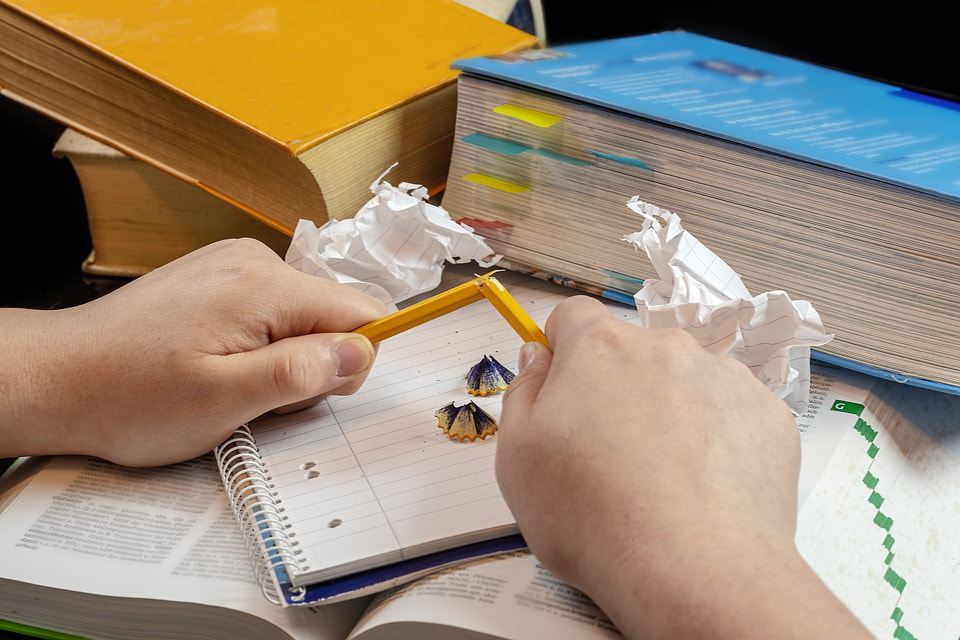

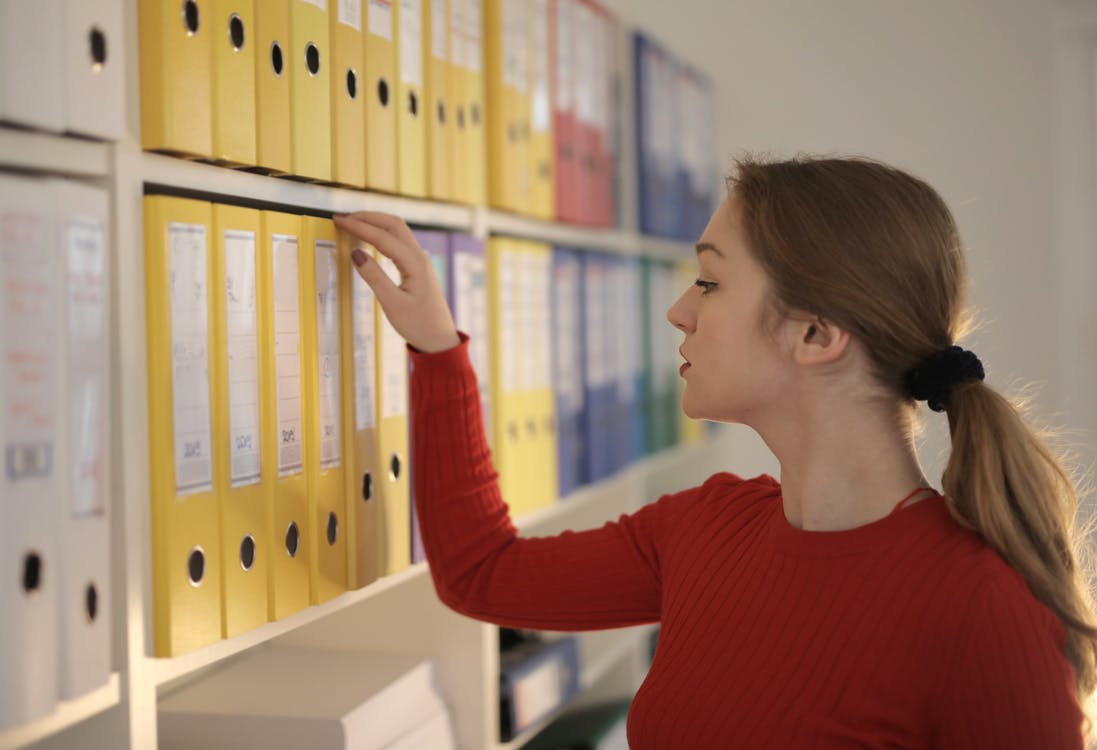


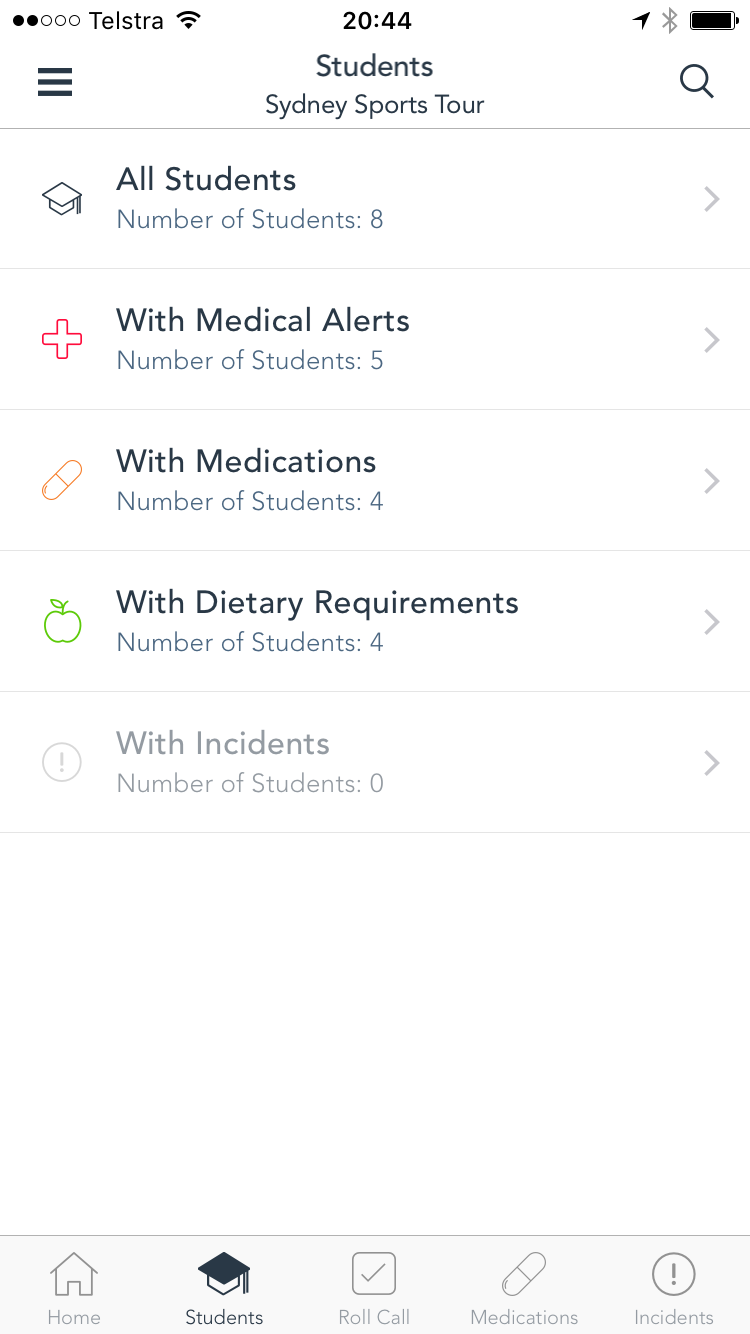
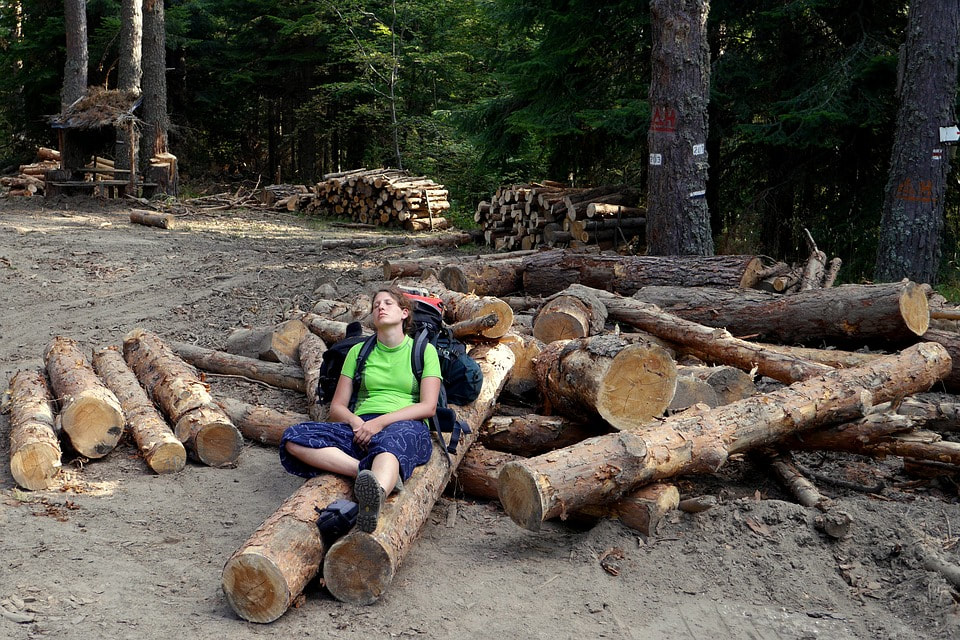
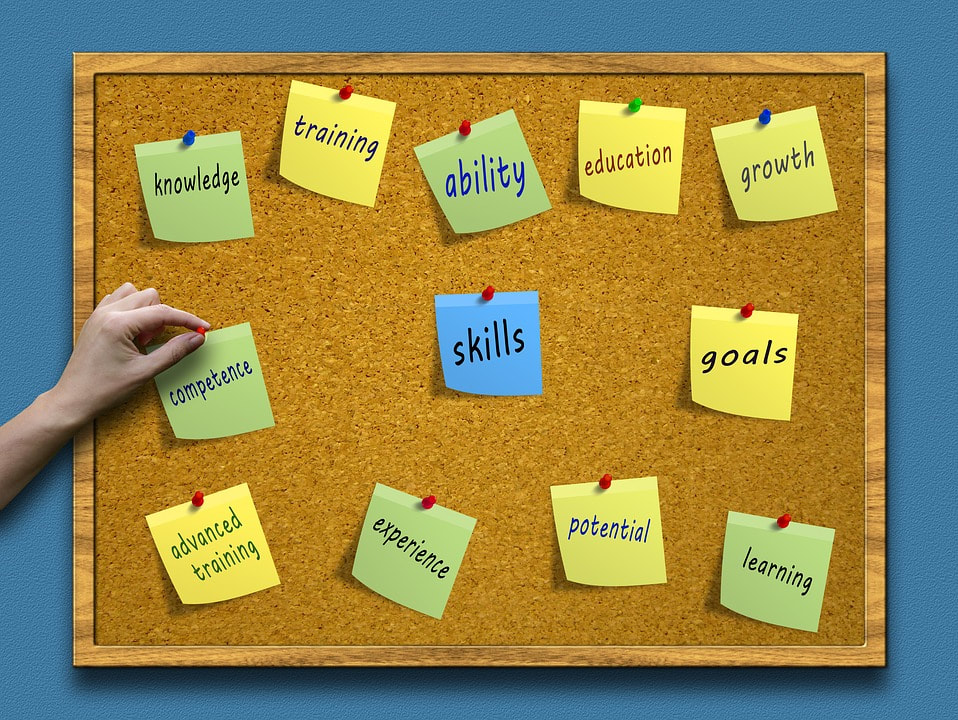
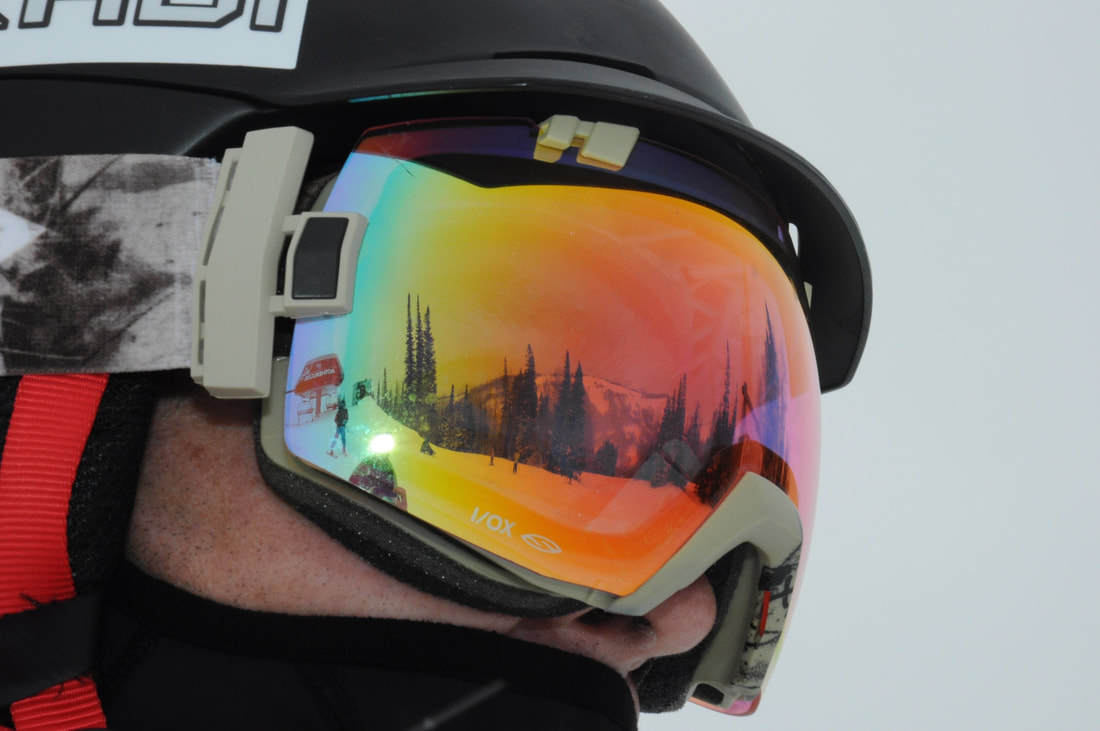


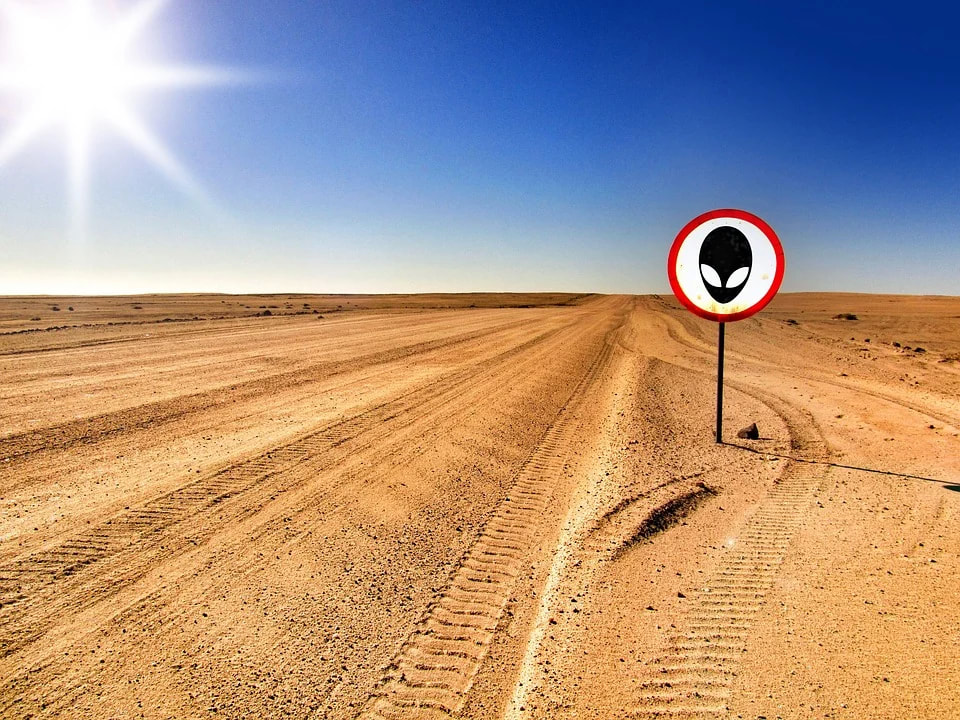
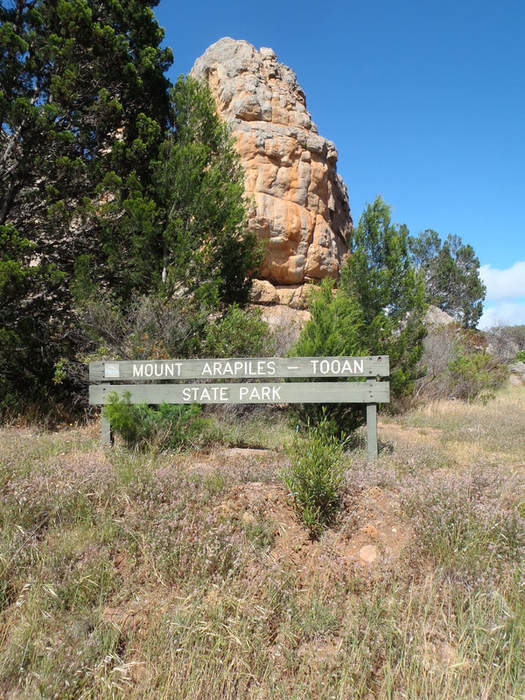
 RSS Feed
RSS Feed


